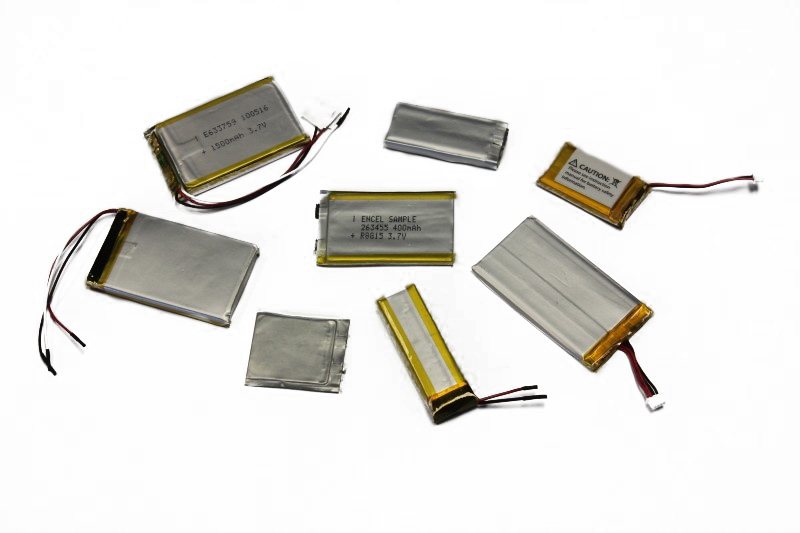Lithium Polymer
Lithium Polymer Ion batteries provide the performance of the Li-ion in a thin or moldable package. They do not use a volatile liquid electrolyte and can sustain significant abuse without explosion or fire.
The lithium polymer uses a polymer gel electrolyte to replace the traditional liquid electrolyte. Lithium-polymer finds its market niche in applications that require thin geometries, such as batteries for cell phones, tablets, wearable technologies and other such applications. Expected cycle life is about 500+ full charge and discharge cycles.
- Over 700 Standard Cells Sizes Available
- Standard Series Continually Expanding
- Standard and Custom PCM
- Customized Cell Sizes Available
- Thin Prismatic Form Factor

| Typical Performance Characteristics of Lithium Ion Batteries | |
| Operational Battery Voltage | 4.2 to 2.7 Volts |
| Specific Energy | 100 to 158 Wh/Kg |
| Energy Density | 185 to 220 Wh/L |
| Power Density | 245 to 430 W/Kg |
| Continuous Rate Capability | Typical: 1C |
| High Rate | 5C up to 15C |
| Pulse Rate Capability | Up to 15C |
| Cycle Life at 100% DOD | Typically 500 |
| Calendar Life | 3 – 5 years |
| Self Discharge Rate | 0.3% / month |
| Operable Temperature Range | -20C to 60C |
| Operable Charge Temperature Range | 10C to 45C |
| Memory Effect | None |
Note: Characteristics can change according to improvements in chemistry or special niche requirements.
Advantages
- Very thin profile
- Curved and cylindrical form factors
- Lightweight
- Improved safety Expensive
- Easily Customizable Sizes
Typical Application
- Tablets
- Cell Phones
- Portable medical devices
- Laptops
- Compact consumer electronics
- Wearable devices
- Drones
Harding Energy, Inc. offers a wide variety of Lithium Polymer cell options, with multiple certification levels. To make the process easier for our customers, we have uploaded the following PDF’s for our customers to review and select the battery that will fit their needs.